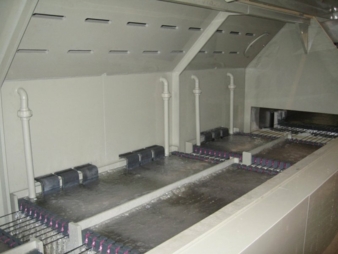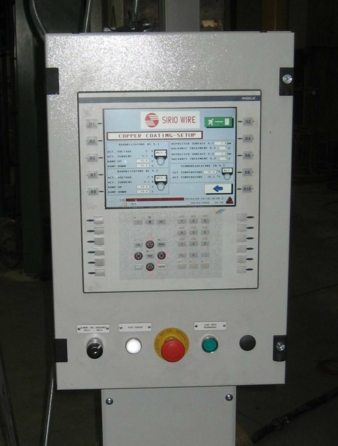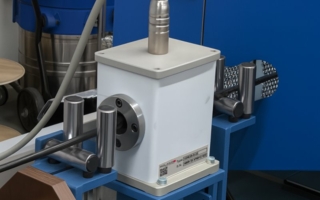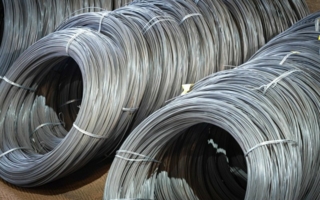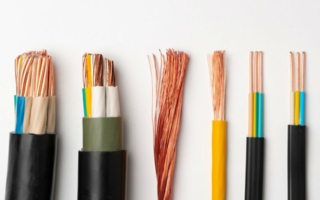22/12/2021 – Surface treatment
Electroplating line for steel wire
This article gives an overview of the application of electroplating in the steel wire industry and presents Sirio Wire's latest developments from recent years.
Electroplating is the process of using electrical current to coat an electrically conductive object, in this case steel wire, with a relatively thin layer of metal. The primary application of electroplating deposits a layer of a metal having some desired property, in particular corrosion protection or lubricity on the steel wire surface.
The wire works as cathode in a conductive solution. The anode can be the metal to be deposited itself or insoluble anodes usually made of activated titanium. A rectifier supplies a direct current to the cathode causing the metal ions in solution to lose their charge and plate out on the wire. As the electrical current flows through the circuit, the anode slowly dissolves and replenishes the ions in the bath or in case of insoluble anodes, the metal to be plated must be periodically replenished in the bath itself or in a separate dissolution tank as they are drawn out of the solution.
For corrosion protection, zinc coating is a very common practice. It can be obtained by immersion in molten zinc bath (hot dip process) or electrolytically.
Electrolytic galvanizing
Electrolytic galvanizing is usually preferred to hot dip galvanizing in the following conditions:
1. When a very low zinc coating is requested: Producing wire with a coating lower than 50g/m² is not possible with hot dip galvanizing while there is no difficulty with electro galvanization.
2. For small production: Investment costs for hot dip galvanizing lines are much more important than for electro galvanizing lines and it is difficult to produce hot dip galvanizing lines for a small number of wires while it is not a problem for electroplating lines.
3. For non-continuous operation: While hot dip galvanizing line has to be operated 24h/24, electroplating lines can easily be stopped and restarted. Moreover, while the electro galvanizing line is stopped, there are no costs whereas for hot dip process, the zinc bath needs to be heated anyway to keep the zinc molten.
Composing of the plating lines
Sirio Wire's lines are composed of a set of polypropylene working basins and a set of tanks, made of polypropylene welded plates. Collecting pipes feed the working basins; the bath is pumped from the storage tank located below, by vertical pumps. They prefer insoluble anodes and a separate dissolution tank. Covers with counterweight systems and aspiration caps are foreseen for a perfect containment of fumes. The company has developed a PLC based control system with touch screen panel for control of the elements of the line and for the automatic calculation and supply of requested current intensity for the requested coating thickness in function of the speed and of the wire diameter. Before entering the plating section, the wire needs to be perfectly clean, free of any soap residuals and oxide coming from the previous drawing and heat treatment process in order to have a perfect adherence of the metal on the steel. In particular, Sirio Wire supplies very efficient electrolytic H2SO4 pickling bathes. They recommend the use of a scrubber for fumes neutralization.
Sirio Wire srl
Via Torino 3/5, 20814 Varedo (MB)/Italy
Contact person is Thierry Heynen
Tel.: +39 0362 573197
info@siriowire.it
www.siriowire.com

